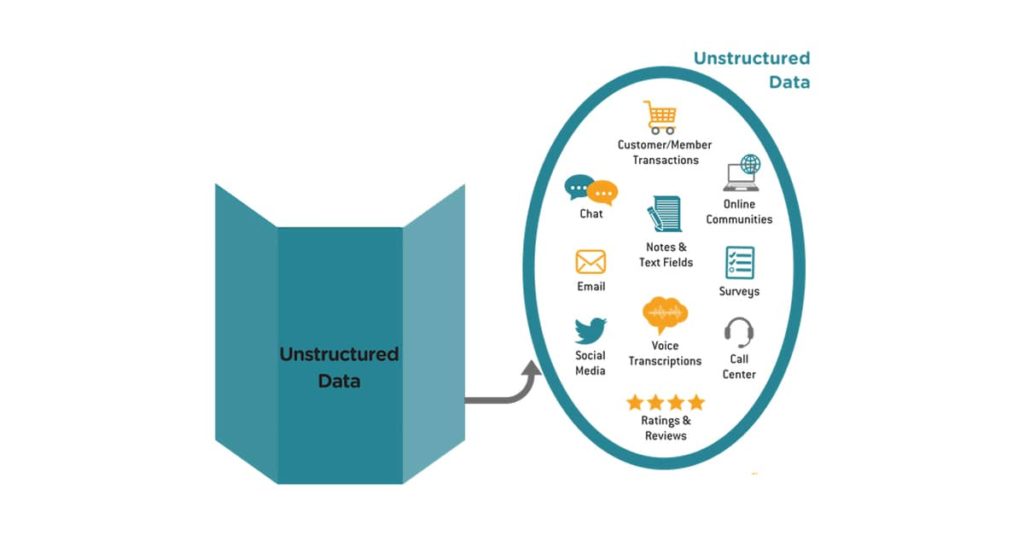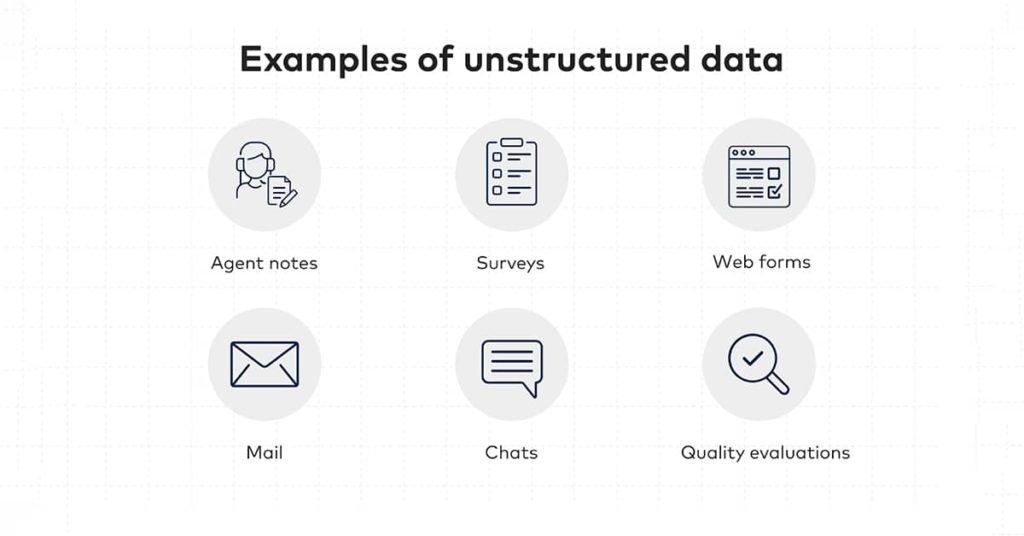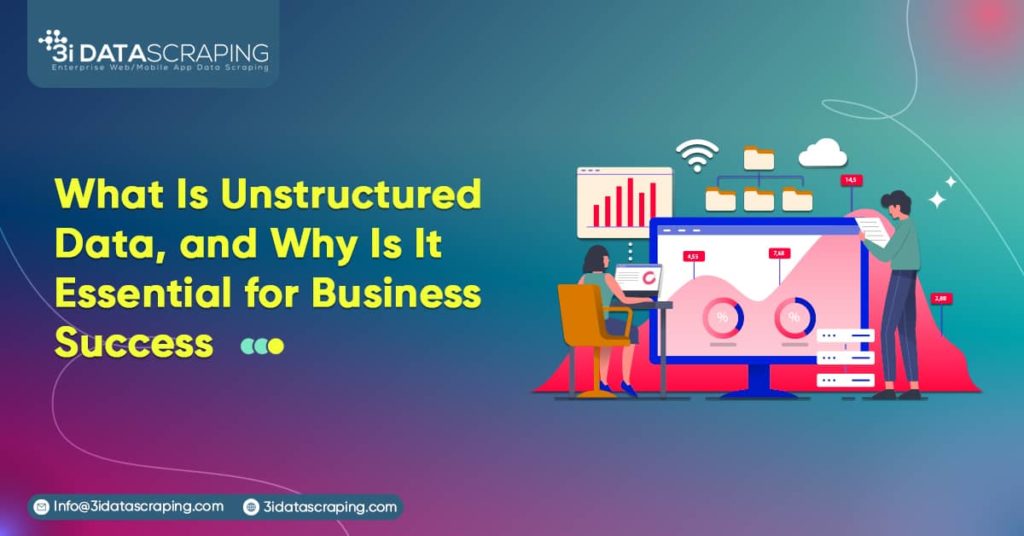What Is Unstructured Data and Why Is It Essential for Business Success?
Our achievements in the field of business digital transformation.









Introduction
In today’s digital world, businesses are collecting a lot of data. Some of this data is called unstructured data. Unlike organized and structured data, unstructured data does not follow a specific format or organization. It includes emails, social media posts, audio and video files, and customer feedback. Although unstructured data may seem messy and overwhelming, it is actually precious and essential for businesses to succeed.
In this introduction, we will talk about unstructured data and why it is important for businesses. We will see how harnessing the power of unstructured data can lead to innovation, provide valuable insights, and give a competitive edge in a data-driven world.
What Is Unstructured Data?
Unstructured Data refers to information that does not have a specific format for an organization. It is like a jumbled mess of data that does not fit neatly into tables, columns, or rows, as seen in a spreadsheet or a database.
Let me give you an example. Imagine you have a bunch of emails from different people. Each email contains text, attachments, and some images or even videos. If you look at all those emails together, you will realize they must follow a consistent structure. Some emails might be long, others short. Some might have attachments, while others do not.
There is no set pattern or format to follow.
Similarly, unstructured data can come from various sources like social media posts, videos, audio recordings, documents, sensor data, etc. The common thread among all these data types is that they lack a predetermined organization or structure.
The Significance of Unstructured Data
Unstructured data is super important for businesses to succeed in our data-driven world. Unlike structured data, which is organized and easy to analyze, unstructured data is information that does not fit nicely into databases. It includes emails, social media posts, customer reviews, images, and videos.
This kind of data is valuable for businesses because it gives them insights into what customers think, like, and do. It helps them make smarter decisions.
Businesses can find patterns and trends in unstructured data using fancy techniques like language processing and image recognition. This helps them discover new opportunities, spot emerging trends, and stay ahead of the competition.
Unstructured data helps businesses personalize their offerings, make customers happier, and work more efficiently. Using unstructured data is really important for businesses to be successful, stay flexible, be innovative, and do well in today’s changing market.
Tools for Unstructured Data Analysis

There are some beneficial tools for dealing with unstructured data, which is information that does not have a specific format or organization. Let me tell you about a couple of them.
1. Apache Hadoop
Hadoop is a popular tool that many people use. It helps with storing and processing big chunks of data across multiple computers. It is a reliable and scalable system that uses MapReduce’s special programming method to handle unstructured data.
2. Apache Spark
Spark is another powerful tool that can handle large amounts of data. It is like a one-stop shop for data processing. It comes with different libraries that can handle unstructured data. For example, you can use Spark SQL for advanced analysis, Spark Streaming to deal with real-time data, and MLlib to apply machine learning techniques.
3. Google Cloud Natural Language API
Google has this cool cloud service called Natural Language API. It can do some amazing stuff with unstructured text. For example, it can tell you if a text sounds positive or negative (sentiment analysis), recognize essential things like names and places (entity recognition), and even sort the text into different topics.
4. RapidMiner
Data scientists love using RapidMiner. It is a platform that helps them work with data. It has all sorts of handy tools to prepare your data, use fancy machine-learning techniques, and make predictions. Interestingly, it also has special features for dealing with unstructured data.
For instance, it can analyze text, tell you if it sounds happy or sad (sentiment analysis), and even figure out the main ideas or themes (topic modeling).
5. KNIME
KNIME is a free platform that makes it easy to analyze unstructured data. You can create a data workflow and do advanced data analysis. It has a lot of helpful tools for working with text. You can break down the text into smaller parts to understand it better (parsing), clean up any unnecessary stuff, and even do cool things like breaking sentences into individual words (tokenization). It is also great for tasks like natural language processing, where you want to make sense of human language.
Case Studies of Successful Unstructured Data Utilization

1. Netflix
Netflix uses different types of information from users, like their ratings, what they watch, and how they interact on social media. They look at this information to understand what users like and how they behave.
This helps them suggest movies and shows that users will enjoy and improve the content they offer. By using this information, Netflix can give each user a unique experience that they will like, which makes customers happier and more likely to keep using Netflix.
2. Google
Google uses a lot of information from the web by scanning and organizing billions of web pages. They use fancy technology like natural language processing and machine learning to understand and make sense of all the text on those pages.
This helps them give us search results that match what we are looking for. Because they are so good at using this information, Google is the most popular search engine in the world and gives us accurate results, improving our search experience.
3. Uber
Uber collects and uses different kinds of information to make their service better. This includes things like where people are going, details about each trip, and how drivers are rated. They look at all this data to improve their work and give drivers and riders a better experience.
By looking at this information in real-time, Uber can determine where many people want rides. They can also ensure drivers are sent to the right places at times. This helps them be more efficient and makes customers happier because they don’t have to wait as long.
Top Future Trends In Unstructured Data Analysis
1. Natural Language Processing (NLP) and Sentiment Analysis
Natural Language Processing (NLP) techniques are improving at analyzing written text that doesn’t have a specific structure. A critical part of NLP is sentiment analysis, which helps us understand people’s emotions, opinions, and attitudes in things like social media, reviews, and online forums.
Using NLP and sentiment analysis, companies can learn much from all the text data. This can help them make better decisions, determine their customers’ happiness, manage their brand reputation, and do market research.
2. Deep Learning and Image/Video Analysis
As we see more and more pictures and videos online, it becomes essential to analyze and understand what is in them. Deep learning, a type of advanced technology, helps us do that. It uses special neural networks to determine what objects are in a picture or who is in a video.
This technology is helpful for things like recognizing faces, understanding scenes, making short video summaries, and ensuring the content is appropriate. As more and more companies use visual data, getting helpful information from all these pictures and videos becomes even more important.
3. Multi-modal Data Analysis
When we analyze data, it is about more than just looking at text or pictures. In the future, we will see a lot more analysis of different data types together. This means combining text, images, sounds, and sensor data to learn more.
Organizations combining data from different sources can better understand complex things. For example, they combine social media posts, pictures, and sound recordings.
In that case, they can better understand people’s feelings about something during a specific event or marketing campaign. Analyzing multi-modal data will need advanced techniques, like blending data, finding connections between different data types, and using algorithms to learn from it all.
Conclusion
In conclusion, unstructured data is super important for businesses to do well today. That is all about data. Unlike structured data, which has a set format, unstructured data is more like a jumble of information without any specific organization. This data includes emails, social media posts, pictures, videos, and customer feedback.
Why is unstructured data so crucial? Well, it gives businesses precious insights into what customers like, the latest trends, and how people behave. Businesses can find hidden patterns and better understand their target audience by analyzing unstructured data. This helps them make smart decisions and give personalized experiences to their customers. So, unstructured data is a big deal for business success.














What Will We Do Next?
- Our representative will contact you within 24 hours.
- We will collect all the necessary requirements from you.
- The team of analysts and developers will prepare estimation.
- We keep confidentiality with all our clients by signing NDA.





